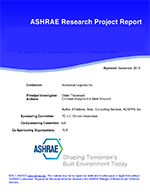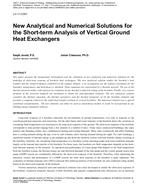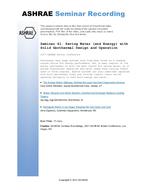The US Army initiated a project to make measurements of heating and cooling energy in occupied Army housing units to determine the effect of radiant barriers (RBs) on energy consumption at Fort Benning, in Columbus, Ga. One side (1700 ft2) of each of five duplexes was used as a control (no RB was installed in it), while the other side had a perforated RB laid on top of the existing estimated R-11 fibreglass loose-fill attic insulation in the middle of July. All houses were instrumented with data-logging equipment that measured air conditioner and gas furnace energy use. Cooling season measurements showed that submetered air conditioner (A/C) kWh-meter data read on a weekly basis did not describe the performance of the RBs. Occupant lifestyle in general, and a dirty air filter at one site, nullified direct meter reading comparisons. Attic heat flow and temperature measurements revealed that the RBs were effective at all sites. Estimated annual cooling savings from a use of horizontal radiant barriers (HRBs) ranged from 253 kWh to 1354 kWh, or 3% to 17%. Annual space heating savings of about 42 CCF to 70 CCF of gas (11% to 19%) were found.
KEYWORDS: foils, measuring, site testing, housing, USA, heat load, cooling load, energy consumption, horizontal, loggers, unit air conditioners, gas fired boilers, cooling season, heat flow, attics, temperature, energy conservation, space heating.
Citation: Symposium, ASHRAE Transactions, vol. 96, pt. 2, St. Louis 1990
Product Details
- Published:
- 1990
- Number of Pages:
- 10
- File Size:
- 1 file , 2.2 MB
- Product Code(s):
- D-18697


